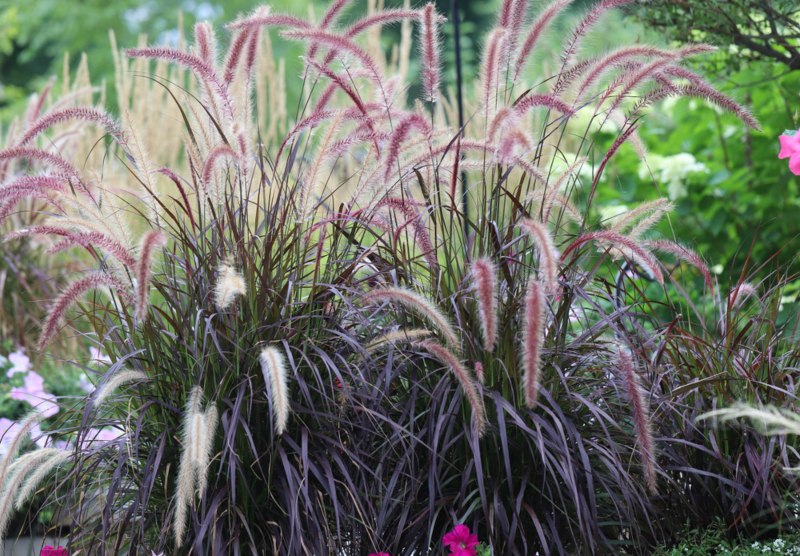Growing different types of plants in your flower beds can help to create different looks, textures, and heights. Purple fountain grass is popular, as it has a unique height, texture, and colors.
This plant received its name for the beautiful display of purple and burgundy flowers that cascade from the top of the plant when it is in bloom. This plant can also be cut down and have its plumes dried out. The dried plant is then often used in fall centerpieces due to its soft brown coloring and fall-like texture.
The plant also has a lot of height, reaching about three to five feet when grown. If you are looking to add this plant to your garden, you may be curious as to how to grow and care for it. Here is some of the information you need to know.
Light and Temperature Requirements
Purple fountain grass prefers to be in a spot where it gets a lot of sunlight. While it can tolerate some shade, shade can inhibit its growth and prevent it from reaching its full potential. The plant also prefers to be in warm weather and thrives in tropical conditions. As long as it is planted in a place where temperatures do not dip below 20 degrees Fahrenheit, the plant can survive and come back as a perennial. If you plant the plant in places where weather dips lower than that temperature, the plant will likely die and need to be replaced in the spring each year.
Water Needs
If you are looking for a plant that is drought-tolerant, you are in luck. Purple fountain grass is an ornamental grass that is drought tolerant. Plants should be watered a couple of times per week until the plant has established itself. From there, it requires very little water to continue to grow.
Soil & Fertilizing
Purple fountain grass does well in most types of soil, including poor soil. However, it does not prefer soil that becomes waterlogged. If you have poor soil, you will want to fertilize. Fertilizing helps the plant to grow. It is recommended that you ensure you use a fertilizer that provides nutrients to the plant when it is in flowering season. For most plants, this will be around summertime.
Deadheading and Pruning
When it comes to purple fountain grass, pruning the plant is extremely important. It is recommended that you prune this plant or ornamental grass at least once a year, preferably in late winter or early fall, just before the prime growing season for the plant. Pruning the plant is important to trim away the dead foliage. This allows air and sunlight to hit the parts of the plant that need to grow, without dead foliage getting in the way.
Planting Indoors
While most people grow purple fountain grass outdoors, some people plant the grass in containers and treat it as an indoor plant. The plant does well indoors, and keeping it indoors helps to keep it alive if you live in an area with cold weather.
Purple fountain grass can add a lot to your space. When it is blooming, it presents as beautiful, wispy purple and burgundy arcs. When it is not in bloom, it has a unique texture that is different than many other types of plants. If you are looking to spruce up your yard and want something different, purple fountain grass may be ideal for you.




